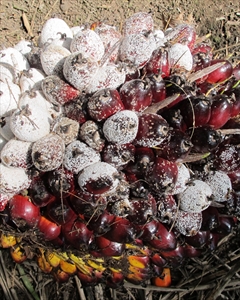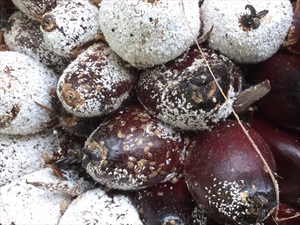- Widespread distribution. On fruit trees, shrubs and ornamentals, e.g., citrus, hibiscus, coconut, mango, and oil palm, but usually under biological control.
- Sucks sap from leaves, stems and fruit, weakening plants and causing distortions.
- Eggs laid under cover or 'armour', hatching to produce 'crawlers' (nymphs); these moult becoming females, up to 2.5 mm long, mussel-shaped, white to light brown, or males, shorter, narrower, and snow-white. Males become tiny fly-like insects, with wings; they are short-lived.
- Spread by crawlers walking, or carried by wind, vehicles, animals, birds, on clothes, and the trade in plants.
- Natural enemies: ladybird beetles, parasitoid wasps (Aspidiotiphagus, Aphytis and others).
- Cultural control: check nursery stock is free from infestation; if present, prune; wide spacing preventing leaves touching and crawlers moving between trees.
- Chemical control: use lime sulphur or wettable sulphur, leaving 30 days if spraying oils (READ INSTRUCTIONS); alternatively, spot-spray infestations with soap solution, horticultural or white oils (see Fact Sheet no. 56); avoid malathion and synthetic pyrethroids - they will kill natural enemies.






